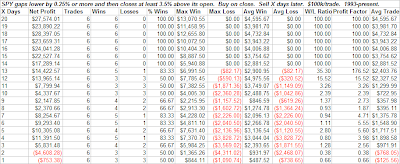
"What a week! After the Treasury/FED decided to test the market by letting LEH file chapter 11 on monday, the market responded. On monday the DOW dropped 500 points. On tuesday the insurance giant AIG failed and the Treasury effectively nationalized them. Then on wednesday the DOW dropped 450 points more, Gold was rocketing, short term rates were in a free fall, credit was freezing up, and MS/GS were collapsing. With the banks under significant pressure, BSC/LEH/MER already gone, AIG and other insurance companies under pressure, and now the money markets wavering, something had to be done and fast. Hundreds of billions of dollars, by central banks worldwide, were injected overnight into the markets to address liquidity. On thursday as the markets continued to fall extraordinary steps were taken. The SEC invoked the ban on naked short selling again. The UK took it a step further, banning all short selling until next year. As the market gyrated, word came out that a massive government plan was being put together to address the financial markets. The markets recovered and the DOW closed up 400 points. On friday before the open, the SEC invoked a two week ban on all short selling. The Treasury announced it was buying FNM/FRE paper, etc. Markets went soaring worldwide. Then on options expiration day the US markets opened with a huge gap up of over 4%. The major bailout plan is being worked on this weekend by the President, Congress, the FED and Treasury."
From the ELLIOTT WAVE lives on
===========================================================================
发信人: yyber (总结过去,展望未来), 信区: Stock
标 题: 简单说一下今天的情况
发信站: BBS 未名空间站 (Tue Sep 16 23:03:45 2008)
1.SPX touched 1170 at market open. On monthly chart,it 50% retreat from
2003 bottom to 2007 top.
2.Today's volume is the largest in past three years,probably past several
years.
3.VIX reached to 33.x and closed with a read candle.
4.CPC was 1.47 yesterday, you can check its history.
5. COMPX finally formed a triple bottom.Actually it opened at 2142, which is
lower than March low and closed above yesterday's close. Interesting.
6. 20 is a very import support for XLF. It closed below 20 yesterday, opened
at 18 today and climbed all the way up to close at 20.2. Is this a typical
bear trap?
7. There were divergence on NYAD. Simply say, only 210 common stocks made
fresh 52-week lows in the NYSE Composite universe, versus about 450 in July
and over 700 in January.
8. To be continue....
***For trend follower,they need a major a accumulation day and a higher low,
higher high. Some traders may want to see QQQQ above 46 and SPX above 1260
before taking long potions. But I am not that kind of style now. Trend
follow just doesn't work for this kind of market,.
=====================================================================================
====================================================================================
发信人: yyber (总结过去,展望未来), 信区: Stock
标 题: 靠,全埋葬起来
发信站: BBS 未名空间站 (Wed Sep 17 16:08:44 2008)
剩下的50%打死我也不出手了,留个东山再起的本钱!
--==================================================================================
发信人: yyber (总结过去,展望未来), 信区: Stock
标 题: 衷心感谢C帅
发信站: BBS 未名空间站 (Wed Sep 17 17:18:52 2008)
C帅说过:
money management》操作》大盘》stock pick!!
幸亏我牢记在心,不然这次又要被wipe out了!昨天几乎都想要上50%的。后来想别急
,反正已经有了20%了,高开我也没踏空,低开了看情况再加仓!
====================================================================================
发信人: yyber (总结过去,展望未来), 信区: Stock
标 题: Same conclusion with yesterdays
发信站: BBS 未名空间站 (Wed Sep 17 20:19:33 2008)
虽然今天进去的又被套住了。
不过我还是相信TA就是讲概率。注意money management就行了。
我看金子明天还怎么涨,纯粹是panic!
http://www.mitbbs.com/article/Stock/31466653_3.html
==================================================================
发信人: yyber (总结过去,展望未来), 信区: Stock
标 题: so far today
发信站: BBS 未名空间站 (Thu Sep 18 12:55:05 2008)
不加,不减,不怕,不慌!
边打游戏边看盘。
--
=======================================================================
发信人: yyber (总结过去,展望未来), 信区: Stock
标 题: I think it is over
发信站: BBS 未名空间站 (Thu Sep 18 13:17:20 2008)
今天的最底应该是过了。
错了请封我10天!!
============================================================================
发信人: yyber (总结过去,展望未来), 信区: Stock
标 题: 狂想1
发信站: BBS 未名空间站 (Thu Sep 18 13:40:03 2008)
aapl close 135 tomorrow!
--
============================================================================
发信人: yyber (总结过去,展望未来), 信区: Stock
标 题: swing trader
发信站: BBS 未名空间站 (Thu Sep 18 13:52:17 2008)
just buy now,with a stop at today's low!
reward》risk!
--
==========================================================================
发信人: yyber (总结过去,展望未来), 信区: Stock
标 题: It is time to sit tight
发信站: BBS 未名空间站 (Thu Sep 18 15:41:50 2008)
for swing trader!
Today's low should be a low for quite long time, I believe!


























